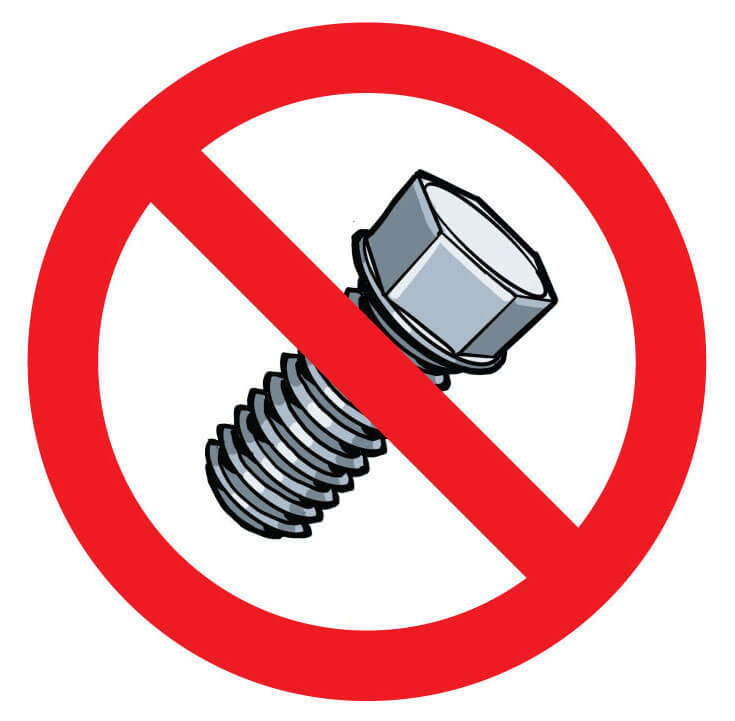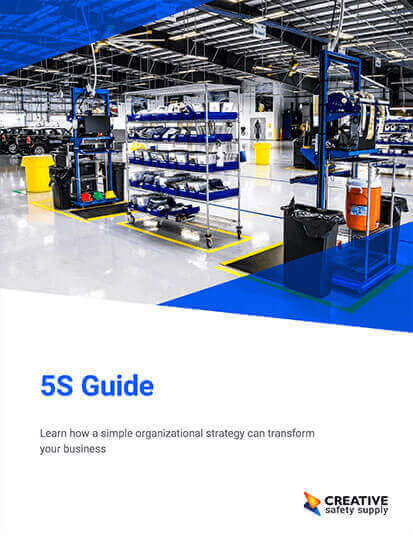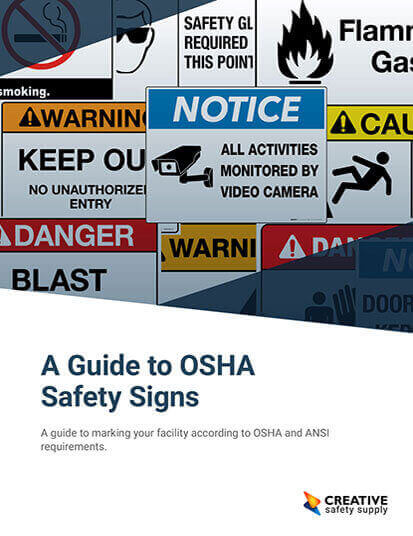
Strict regulations are a part of functional workplaces. Some of them, such as the aviation and aerospace industries, adhere to strict maintenance procedures to eliminate the risk of hazards or damage. However, it’s likely that some issues may arise during the flow of operations, including FOD. Here’s everything you need to know about it and what control measures to apply to eliminate it.
What is FOD?
FOD is an important quality control and safety concept that refers to loose objects and small debris that have the potential to cause damage and injury in work environments. The term “FOD” is mainly used in the aviation and aerospace industries but is important in any industry where quality and safety are a concern. For example, FOD is a serious matter in manufacturing environments, where quality assurance mandates that everything is in its proper place and staff are kept safe.
Depending on the context, the acronym FOD has two different meanings; it either indicates Foreign Object Debris or, as a result of the presence of this debris, Foreign Object Damage.
What is Foreign Object Debris?
Foreign Object Debris (FOD) at airports includes an object found in an inappropriate location, which poses a significant risk due to its presence. Such displaced objects, such as loose hardware, pavement fragments, catering supplies, building materials, rocks, and more, have the potential to damage equipment or injure personnel. Common scenarios of FOD take place at:

- Terminal gates
- Cargo aprons
- Taxiways
- Runways
- Run-up pads
Consequences of an FOD incident can include:
- Damage to airplanes, equipment, and devices
- Injury to staff, visitors, or passengers
- Safety violations
- Production delays
- Reduced quality in finished products
- Overall reduced efficiency
- In military circumstances, national security and mission capability may be compromised
What is Foreign Object Damage?
Foreign object damage is the impact of a displaced object in an unintended location. Simply put, foreign object damage is the result of an object, live or not present in an inappropriate space. Due to its presence, it can impact the quality, functionality, and economic value of a manufactured item, leading to catastrophic effects.
Common examples of foreign object damage include:
- Shredded fan blades when sucked into a turbojet
- A piece of equipment forgotten in the engine
- Tires malfunctioning at high speeds
What is FOD in Aviation?
FOD is particularly prominent within the aviation sector due to the amount of risk it poses; even a small scrap of metal left on the runway can become lodged in engines or slash aircraft tires, and if the damage occurs while planes are attempting to take off or land, the results can be catastrophic.
Jet engines also create a blast that throws debris everywhere, which creates a dangerous situation for airline personnel on the ground, who might be hit by stones, broken pavement, broken luggage parts, mechanic’s tools, or tire fragments. FOD events typically peak during the early spring, as airports conduct construction, and during the winter, due to snow and ice.
FOD causes extensive damage to airlines, aircraft, and airports every year. Foreign Object Damage statistics are difficult to determine exactly, but Boeing estimates that FOD causes $4 billion in damages annually. The Federal Aviation Administration (FAA) provides specifications and guidance for using a number of tools to find and remove Foreign Object Debris, including visual inspections, sweepers and magnet bars, and automated systems. The FAA also enforces Advisory Circulars that provide guidelines for detection equipment, maintaining airport pavements, self-inspection for airport safety, and more.
FOD is also highly concerning to the military; not only are their planes subject to the same type of risks and consequences, but the military must also deal with FOD caused by missile strikes and strive to ensure mission capability and national security. A study by the US Air Force shows that the service paid $240 million from 1995-2004 for incidents involving Foreign Object Debris. During this period of time, the Air Force was involved in almost 800 FOD events, the average cost of which was about $300,000.
What is FOD in Manufacturing?
Non-aviation workplaces should also be concerned about FOD, as debris can present a safety and quality risk. Production processes and assembly lines involve a variety of tools and materials that must move quickly through the facility. Any space where products are received, shipped, stored, repaired, inspected, or manufactured can be designated as an area that may contain Foreign Object Debris.
Many businesses utilize a standard three-layered system of signage for designating these storage or work areas and asking staff to be mindful of identifying and eliminating debris:
If you see this sign, you’re in an area where debris has a very low potential for impact, but it is still a responsibility, and staff must adhere to basic inspection procedures; all items should be accounted for, and general housekeeping should be practiced. Examples where Foreign object damage (FOD) likely occurs include shipping docks and receiving docks.
If you see a sign for this, you are in an area where debris has a higher, yet not severe, potential for impact. On top of basic inspection procedures, there will be additional Foreign Object Debris tasks, and staff should have a higher sense of item awareness. Examples of these areas include modification processes, a packing area, and a parts warehouse.
Signs like these indicate that you are in an area where debris has a very high impact potential, and operations should be conducted with caution. Here, staff should adhere to strict inspection procedures and maintain the highest sense of awareness possible. These areas include assembly operations and open product housing.
Many facilities practice a “Clean As You Go” mindset, an ongoing method of removing debris during operations to ensure that the space and any products are free of FOD. This awareness should be enforced in all environments.
Controlling Foreign Object Debris in Manufacturing
In order to address and maintain awareness of the dangers of Foreign Object Debris, facilities should establish a comprehensive program that incorporates training, inspection, maintenance, and communication. Awareness and communication are at the forefront of FOD programs; controlling this dangerous debris begins with implementing wall signs and floor tape remind workers to clean as they go. Whether staff should proceed with caution or simply maintain basic housekeeping practices, labels, floor tape, wall signs, and barricades are essential tools to make people aware that FOD has the potential to cause problems.
Another component to controlling foreign object debris is to keep your facility clean and organized by decluttering with 5S. This methodology enhances organization and efficiency through five phases: Sort, Set in Order, Shine, Standardize, and Sustain, which help eliminate unnecessary items and importantly, remove any debris. In addition, Implementing 5S can help workers incorporate a constant mindset of housekeeping, making “clean as you go” second nature during daily operations.
Foreign Object Debris (FOD) Prevention Program

A business can develop an FOD Prevention Program to eliminate debris as much as possible, reduce its consequences, and prevent debris from contaminating work areas in the first place. Typically, a program is based on guidelines and standards that are issued by authorities such as the FAA. Major considerations of a prevention program are using area designations (awareness, control, or critical area) to achieve risk mitigation through different levels of control and helping staff understand which preventative actions to take depending on the area.
Programs with the following elements should be included:
- A description of the methods and housekeeping practices used to control Foreign Object Debris
- Designation of the personnel who are responsible for implementing and managing the FOD program
- A method of accountability for tools and other items at the beginning and end of a work shift
- A visitor protocol: visitors in FOD critical areas must be escorted at all times
- Reporting procedures for any missing or lost items
- Foreign Object Debris Prevention Programs provide the information and procedures that staff need to eliminate debris successfully. An effective program greatly reduces the cost of Foreign Object Damage and helps keep workers safe by maintaining a mindset of keeping areas clean.
The Importance of FOD Awareness
No matter the environment, FOD will concern either safety, or quality. Foreign Object Debris isn’t just about equipment getting dented by a rock; damage from foreign objects can happen in a number of ways and often is a constant threat. Many businesses can benefit from implementing an FOD Prevention Program, and the most effective way to eliminate debris is to ensure awareness among staff. With conscientious housekeeping, adequate signage, and cleaning as you go, it is possible to control and prevent Foreign Object Debris.
Implement Safety With CSS
A reliable foreign object debris prevention program begins with awareness. Realizing the need for an FOD prevention program can be a guiding stone to reduce risks and enhance safety. At Creative Safety Supply, we offer a range of resources, ranging from educational resources to industrial products to enhance safety. Whether it’s safety signs or tapes, we’ve got you covered.
Additional FOD facts:
- FOD stands for Foreign Object Damage or Foreign Object Debris, and it refers to any substance, debris, loose hardware, or article that is alien to a vehicle or system and can cause damage. FOD can result in minor repairs or catastrophic events, and it is a major cause of aircraft damage and unscheduled maintenance. Source: https://www.lockheedmartin.com/content/dam/lockheed-martin/aero/documents/scm/tandc/FOD/fod.pdf
- FOD prevention is the responsibility of everyone who works in or around aircraft, engines, parts, components, assemblies, or sub-assemblies. FOD prevention requires regular inspections, proper storage and handling, employee training, and awareness. Source: https://www.fodcontrol.com/what-is-fod/
- FOD prevention areas (FPAs) are designated zones where different levels of FOD prevention measures are applied. FPAs can be classified as FOD Awareness, FOD Control, or FOD Critical, depending on the type and stage of the manufacturing, modification, or operation process. Source: https://www.lockheedmartin.com/content/dam/lockheed-martin/aero/documents/scm/tandc/FOD/fod.pdf
- FOD walks and FOD sweeps are common methods of detecting and removing FOD from the ground or work areas. FOD walks are performed by personnel on foot, while FOD sweeps are performed by ground equipment such as vacuums, magnets, or sweepers. Source: https://www.flyingmag.com/5-things-you-can-do-to-help-prevent-foreign-object-debris/
- FOD barriers and FOD detection systems are tools that can help prevent FOD migration or entrapment. FOD barriers are physical or visual devices that block or mark the boundaries of FPAs, such as fences, signs, cones, or tape. FOD detection systems are sensors or cameras that monitor the presence of FOD on runways, taxiways, or ramps. Source: https://fodprevention.com/understanding-foreign-object-debris-and-damage-prevention/
- FOD can also be caused by wildlife, such as birds, rodents, or insects, that can enter or damage the aircraft or engine. Wildlife FOD can be prevented by using wildlife management techniques, such as habitat modification, exclusion, repellents, or removal. Source: https://www.grypmat.com/blogs/aviation/what-is-fod
Similar Articles
- Lockout/Tagout Program (How To Control Hazardous Energy)
- OSHA Compliance: What You Need to Know
- Quality Control in Manufacturing
- OSHA’s Guidelines to Protecting Employees from Coronavirus
- Implementing 5S | Tools and Training
- Workplace Safety Inspections & Audits
- 6S: Safety
- Quality, Health, Safety, Environment (QHSE) Management Systems
- How to Implement 5S in an Organization
- Quality Control


